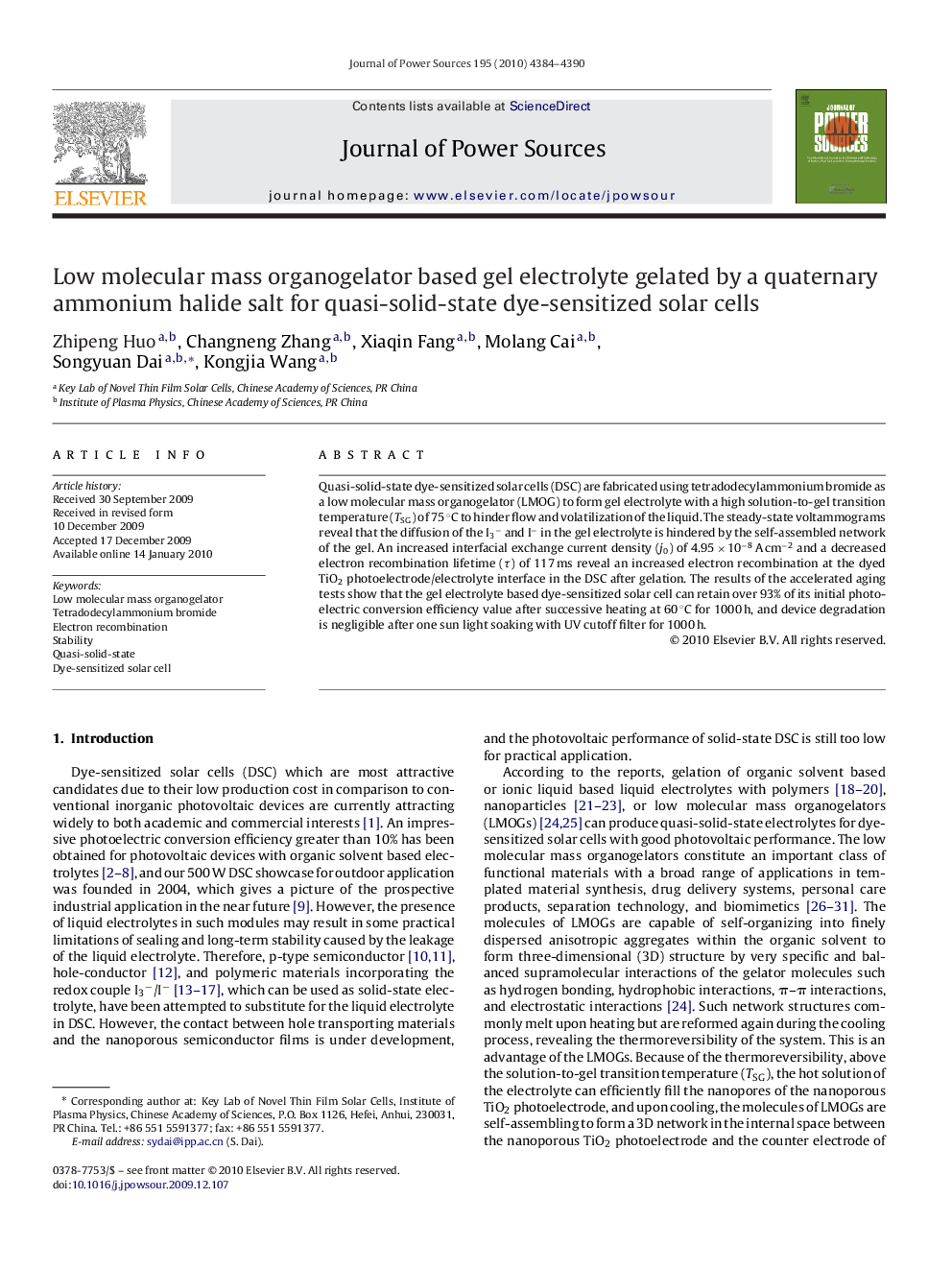| Article ID | Journal | Published Year | Pages | File Type |
|---|---|---|---|---|
| 1290378 | Journal of Power Sources | 2010 | 7 Pages |
Quasi-solid-state dye-sensitized solar cells (DSC) are fabricated using tetradodecylammonium bromide as a low molecular mass organogelator (LMOG) to form gel electrolyte with a high solution-to-gel transition temperature (TSG) of 75 °C to hinder flow and volatilization of the liquid. The steady-state voltammograms reveal that the diffusion of the I3− and I− in the gel electrolyte is hindered by the self-assembled network of the gel. An increased interfacial exchange current density (j0) of 4.95 × 10−8 A cm−2 and a decreased electron recombination lifetime (τ) of 117 ms reveal an increased electron recombination at the dyed TiO2 photoelectrode/electrolyte interface in the DSC after gelation. The results of the accelerated aging tests show that the gel electrolyte based dye-sensitized solar cell can retain over 93% of its initial photoelectric conversion efficiency value after successive heating at 60 °C for 1000 h, and device degradation is negligible after one sun light soaking with UV cutoff filter for 1000 h.
